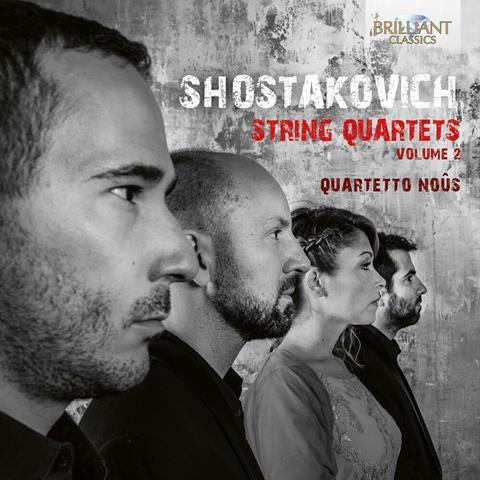An Italian group brings warmth to its ongoing Shostakovich cycle

The Strad Issue: July 2024
Description: An Italian group brings warmth to its ongoing Shostakovich cycle
Musicians: Quartetto Noûs
Works: Shostakovich: String Quartets vol.2: no.10 in A flat major, no.11 in F minor, no.12 in D flat major
Catalogue number: BRILLIANT CLASSICS 96420
There is still room, even in the well-filled Shostakovich discography, for a down-to-earth approach to the later quartets. The Tenth dates from 1964 and, like the ‘Babi Yar’ 13th Symphony from two years earlier, has not yet succumbed to the skeletal textures and deathly pallor of the composer’s long goodbye in music.
All of which is to commend the Noûs for projecting the Tenth with such rude health and good humour. The sul ponticello ghostliness of the opening Andante is charged with wistful rather than bitter nostalgia. The full measure of the bow lays into the string throughout the furious scherzo, and the finale is imbued with a warm cantabile.
The Eleventh is a tougher nut to crack. Here again, though, a sound-palette more usually applied to Tchaikovsky pays dividends in bringing rich and personable characterisation to what can look and sound like desiccated little motifs. The strutting soldier of the second movement, the procession of monks accompanied by a drunkard in the fourth, the graveside scene of the sixth: all leap from the page like episodes from The Brothers Karamazov.
Read: A new work for viola by Shostakovich discovered in Moscow State Archives
Read: Session Report: the Carducci Quartet on recording Shostakovich
Read: Sentimental Work: Sergej Krylov on Shostakovich’s Violin Concerto no.1
Where this essentially Romantic approach falls short is in the Twelfth. Something more deadpan is surely needed for the cello’s opening tone-row. The approach of the Noûs is to join the dots even when the shape of the completed image is far from clear. The first movement rather loses its way, despite a taut basic pulse, and, after a ferociously committed opening, the tension leaches out of the second, despite the technical finish of both playing and engineering. But overall it’s a cycle well worth following.
PETER QUANTRILL



































No comments yet